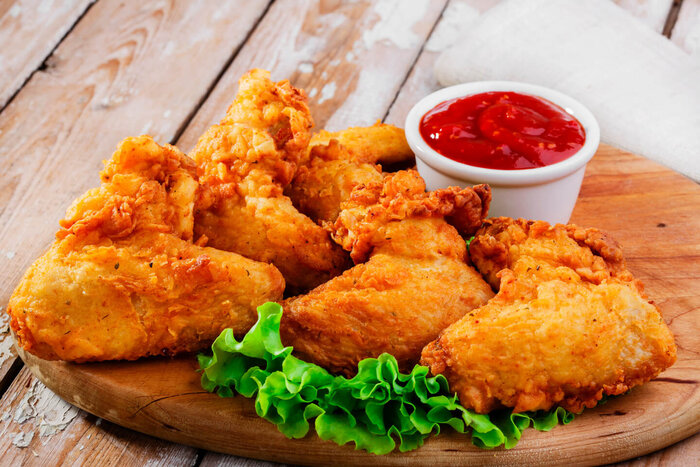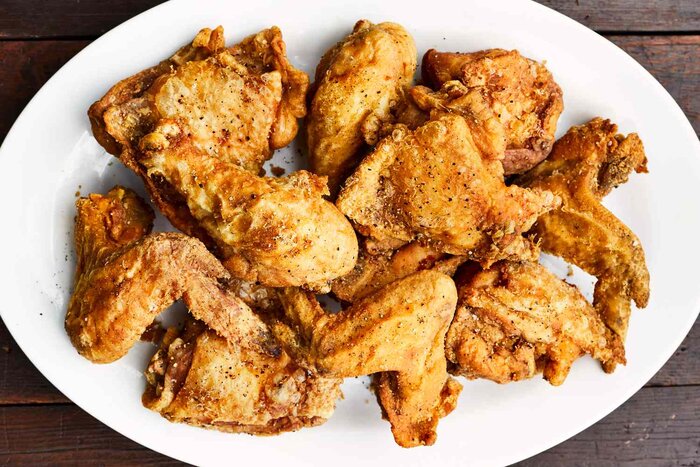Fried Chicken Wings Nutrition: Understanding the Facts About Calories, Protein, Fat, Carbs, and Vitamins
Fried chicken wings are a beloved comfort food for many people. They are crispy, juicy, and flavorful. However, they are also high in calories and fat, making them a less than ideal food choice for those who are health-conscious. In this blog, we will take a closer look at the nutrition facts of fried chicken wings, including the calories, protein, fat, carbs, and vitamins they contain.
Fried Chicken Wings Calories

One fried chicken wing contains approximately 100-120 calories. However, this number can vary depending on the size of the wing and how it is prepared. For example, wings that are breaded and fried may contain more calories than those that are grilled or baked.
Protein In Fried Chicken Wings
Fried chicken wings are a good source of protein, which is essential for building and repairing muscles, as well as maintaining a healthy immune system. One fried chicken wing typically contains around 6-7 grams of protein. However, it is important to note that the breading and frying process can reduce the protein content of the wing.
Fat In Fried Chicken Wings
Fried chicken wings are high in fat, with one wing containing around 6-9 grams of fat. This fat content can be even higher if the wings are fried in oil that is high in saturated or trans fats. Consuming too much saturated and trans fats can increase the risk of heart disease, so it is important to consume fried chicken wings in moderation.
Carbs In Fried Chicken Wings

Fried chicken wings are not a significant source of carbohydrates, with one wing typically containing less than 1 gram of carbs. However, if the wings are breaded or served with dipping sauces that contain sugar, the carb content can increase significantly.
Vitamins And Minerals In Chicken Wings
Fried chicken wings are not a good source of vitamins and minerals. However, they do contain some important nutrients, such as iron and zinc. Iron is essential for transporting oxygen throughout the body, while zinc is important for immune function and wound healing.
Tips for Making Healthier Fried Chicken Wings
While fried chicken wings may not be the healthiest food choice, there are some tips you can follow to make them a little healthier:
Choose Smaller Wings: Smaller wings contain fewer calories and fat than larger ones.
Remove The Skin: The skin of a fried chicken wing contains a significant amount of fat, so removing it can help reduce the fat content.
Use a Healthier Cooking Method: Baking or grilling chicken wings can significantly reduce their calorie and fat content compared to frying.
Use a Healthier Breading: If you choose to bread your chicken wings, use a whole wheat or gluten-free breading instead of a traditional white flour breading.
Are Chicken Wings Good For You
Fried chicken wings can be a tasty treat, but they are not the healthiest food choice. They are high in calories and fat, and consuming them regularly can increase the risk of health problems such as obesity and heart disease.
Fried chicken wings are typically breaded and fried, which adds calories and fat to the food. A single fried chicken wing can contain around 100-120 calories and 6-9 grams of fat, depending on how it is prepared. Additionally, the breading and frying process can reduce the protein content of the chicken wing.
Consuming fried chicken wings in moderation as part of a balanced diet may not be harmful to your health. However, it is important to keep in mind that they should be enjoyed in moderation and not as a regular part of your diet.
If you want to make fried chicken wings a little healthier, there are some tips you can follow. For example, you can choose smaller wings, remove the skin, and use a healthier cooking method such as baking or grilling. Additionally, using a whole wheat or gluten-free breading can help reduce the calorie and fat content of the wings.
In summary, while fried chicken wings can be a tasty treat, they should be consumed in moderation as part of a balanced diet. Making healthier choices when preparing and cooking them can also help reduce their calorie and fat content.